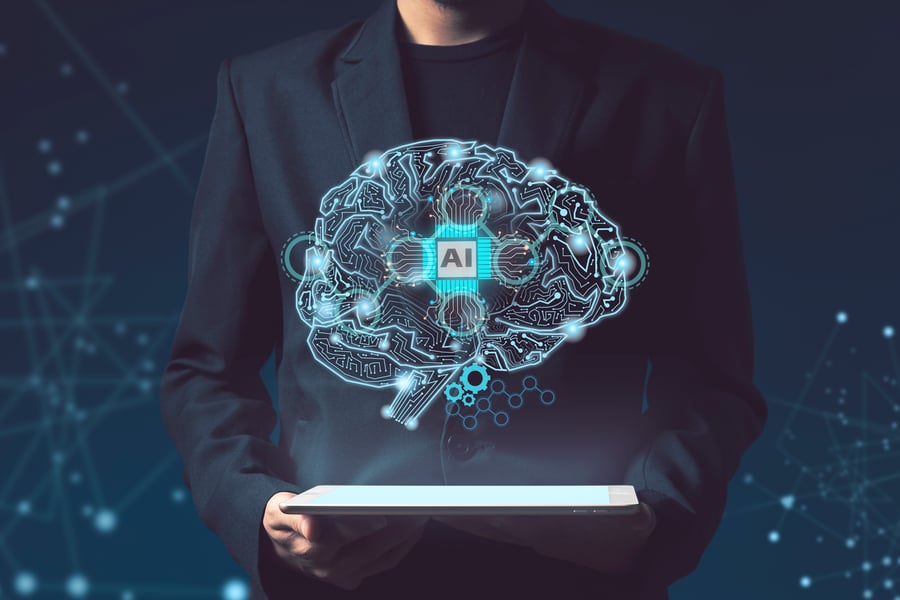
Key Principles of Automated MLOps
Shared Language and Transparency
Automated MLOps is a shared information hub, providing a central platform where everyone can see what's happening. Data scientists can visualize data pipelines, engineers can track model deployments, and business leaders can access performance dashboards – all in one place. This transparency fosters trust, breaks down communication silos, and ensures everyone is aligned on shared goals.
Continuous Integration and Delivery (CI/CD)
CI/CD automates testing and deployment, ensuring models are stable and readily available for production. Data scientists can experiment rapidly with different configurations, while engineers can seamlessly roll out new versions without manual errors. This agility fosters a collaborative environment where feedback is swift, and improvements are continuous.
Version Control and Reproducibility
Automated MLOps implements version control for models and data pipelines. This allows data scientists to track changes, revert to previous versions, and ensure everyone's working with the latest iteration. This fosters collaboration by ensuring everyone is on the same page, eliminating confusion and promoting the reproducibility of results.
Collaborative Experimentation and Model Development
Imagine a shared workspace where data scientists and engineers can brainstorm, experiment, and refine models together. Automated MLOps facilitates this by providing tools for collaborative coding, shared dashboards, and real-time model comparisons. This fosters knowledge sharing, encourages ideas sharing, and accelerates model development through joint efforts.
Real-time Monitoring and Feedback Loops
Automated MLOps continuously tracks model performance, identifies issues early on, and sends alerts to relevant stakeholders. This empowers engineers to proactively address problems before they impact business goals and allows data scientists to analyze performance data and refine models for better outcomes.

How Automated MLOps Can Automate Key Stages
Data Preparation
Imagine pre-built pipelines that automatically clean, transform, and validate data, saving data scientists precious time and ensuring data engineers adhere to governance standards. Everyone benefits from clean, reliable data readily available for analysis.
Model Training
Automated experiments eliminate manual parameter tuning, allowing data scientists to explore more possibilities and find the optimal model faster. Imagine collaborative workspaces where engineers and data scientists can share code, compare results, and iterate on models in real time.
Deployment and Monitoring
Automated deployment pushes models to production seamlessly, eliminating manual errors and ensuring consistency. Real-time performance monitoring empowers engineers to proactively address issues and business stakeholders to gain immediate insights into model impact.

Strategies to Integrate Automated MLOps into Existing Workflows
Start Small and Scale Gradually
Identify a specific pain point in your workflow, like manual data cleaning or complex model deployment. Implement automated solutions for that specific stage, measure the impact, and then gradually expand to other areas. This incremental approach fosters buy-in, builds confidence, and allows for adjustments as needed.
Foster Open Communication and Collaboration
Organize workshops, training sessions, and open forums where all stakeholders can learn about automated MLOps and its benefits. Encourage open communication and address concerns proactively. This collaborative approach ensures everyone feels heard and invested in the success of the integration.
Leverage Existing Tools and Infrastructure
Seek solutions that integrate seamlessly with your existing tools and infrastructure. Cloud-based platforms offer flexibility and scalability, while open-source tools provide cost-effectiveness and customization options. This minimizes disruption and leverages your existing investments.
Prioritize Data Security and Governance
Choose solutions with robust security features and comply with your organization's data privacy regulations. Establish clear access control and data governance policies to ensure the responsible use of automated MLOps.

Conclusion
Automated MLOps is more than just a buzzword; it's a bridge fostering seamless collaboration across data scientists, engineers, and business stakeholders. Real-world examples showcase its power in streamlining workflows, optimizing processes, and accelerating innovation. As the future unfolds with advancements in explainability, continuous learning, and security, embracing automated MLOps today empowers your teams, unlocks your data's potential, and positions you for operational excellence in the data-driven landscape. Let's talk about how we can help you bridge the gap and unlock the future of data science with automated MLOps.


